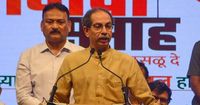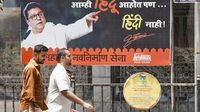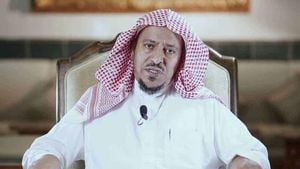In a significant shift in the educational landscape of Maharashtra, the state’s school education department has declared Hindi a mandatory third language in both Marathi and English-medium schools for students from classes 1 to 5. This decision, announced on April 16, 2025, aligns with the National Education Policy (NEP) 2020 and aims to foster a multilingual classroom environment. However, the move has sparked a wave of opposition from various political factions, who argue that it undermines regional languages and cultures.
According to the new Government Resolution (GR), the implementation of Hindi as a third language will be phased in over several years. The curriculum changes will begin with Class 1 in the 2025-26 academic year, followed by subsequent classes in the following years. Specifically, Classes 2, 3, 4, and 6 will adopt the new policy in 2026-27, while Classes 5, 9, and 11 will do so in 2027-28. Finally, Classes 8, 10, and 12 will implement the changes by 2028-29.
Until now, only Marathi and English have been compulsory subjects from Classes 1 to 10. Hindi has already been part of the curriculum from Class 5 in government schools, where it is taught alongside other subjects. From Class 8 onwards, students have had the option to continue with Hindi or switch to Sanskrit or a foreign language. The government argues that introducing Hindi at an earlier stage will facilitate better cognitive development and ease of learning, given the similarities between Hindi and Marathi.
Deepak Pawar, President of the Marathi Study Centre, has raised concerns about the necessity of introducing an additional language when the current curriculum already offers a multilingual setup. He questioned, "If a new language is at all to be introduced, why is the plan not extended to all Indian languages instead of Hindi?" His concerns echo a broader sentiment among critics who argue that imposing Hindi could lead to the marginalization of Marathi and other regional languages.
Despite the government's assertion that Hindi will not compromise the status of Marathi in Maharashtra, opposition leaders have voiced their discontent. Uddhav Thackeray, leader of the Shiv Sena (UBT), has made it clear that his party will not allow Hindi to be imposed as a third language. He believes that while other languages deserve appreciation, the Bharatiya Janata Party (BJP) is attempting to erase regional cultures and languages. Thackeray stated, "The BJP’s intent is to eliminate regional cultures and languages."
Raj Thackeray, president of the Maharashtra Navnirman Sena (MNS), has also opposed the decision, asserting that his party will ensure it is not implemented. He emphasized, "Hindi is not a national language. It is a state language like other languages in the country. Why should it be taught in Maharashtra from the very beginning?" This sentiment reflects a growing concern among regional parties about the central government’s influence on local education policies.
Congress leader Vijay Wadettiwar criticized the move for disregarding Marathi pride, arguing that making Hindi mandatory could hurt local sentiments. He posed a rhetorical question: "Can we demand Marathi as a third language in Madhya Pradesh or Uttar Pradesh?" Wadettiwar's comments highlight the historical context of language politics in India, where linguistic identity has often been a source of contention.
In response to the opposition, Chief Minister Devendra Fadnavis defended the decision by stating that Hindi is essential for communication across the country. He noted, "Hindi should also be learnt as it is a means of communication in the entire country." Fadnavis's remarks indicate the government's commitment to implementing the NEP while promoting a sense of national integration through language.
Prof. Shraddha Kumbhojkar, Head of the Department of History at SPPU, provided additional insights into the ongoing language politics in Maharashtra. She pointed out that while opposition to other languages has existed historically, resistance to Hindi has become more pronounced in recent years. "Opposition to Hindi has been prominent since MNS came into the picture," she stated, highlighting the evolving dynamics of linguistic politics in the state.
As the debate continues, demographic changes across Maharashtra, particularly due to migration from North Indian states, have also influenced the discourse. Pawar noted that this policy could be seen as an attempt by the government to cater to the needs of north Indians who have settled in Maharashtra over the past fifteen years. He questioned whether this initiative serves as an employment guarantee scheme for these individuals, who may be pursuing higher education in Hindi and seeking job opportunities in the state.
Critics like Pawar have also pointed out the government's failure to implement Marathi as a compulsory language in non-Marathi schools. He argued, "If the government can’t implement a policy for Marathi, why are they in such a haste to impose Hindi?" This criticism underscores the complexities of language policy in a diverse state like Maharashtra, where multiple languages coexist.
In conclusion, the decision to make Hindi a mandatory third language in Maharashtra schools has ignited a fierce debate about language, identity, and cultural preservation. As the government pushes forward with its plans, the voices of opposition continue to resonate, reflecting a deep-seated concern for regional languages and cultures in the face of perceived centralization. The outcome of this policy will likely have lasting implications for Maharashtra's educational landscape and its cultural identity.






